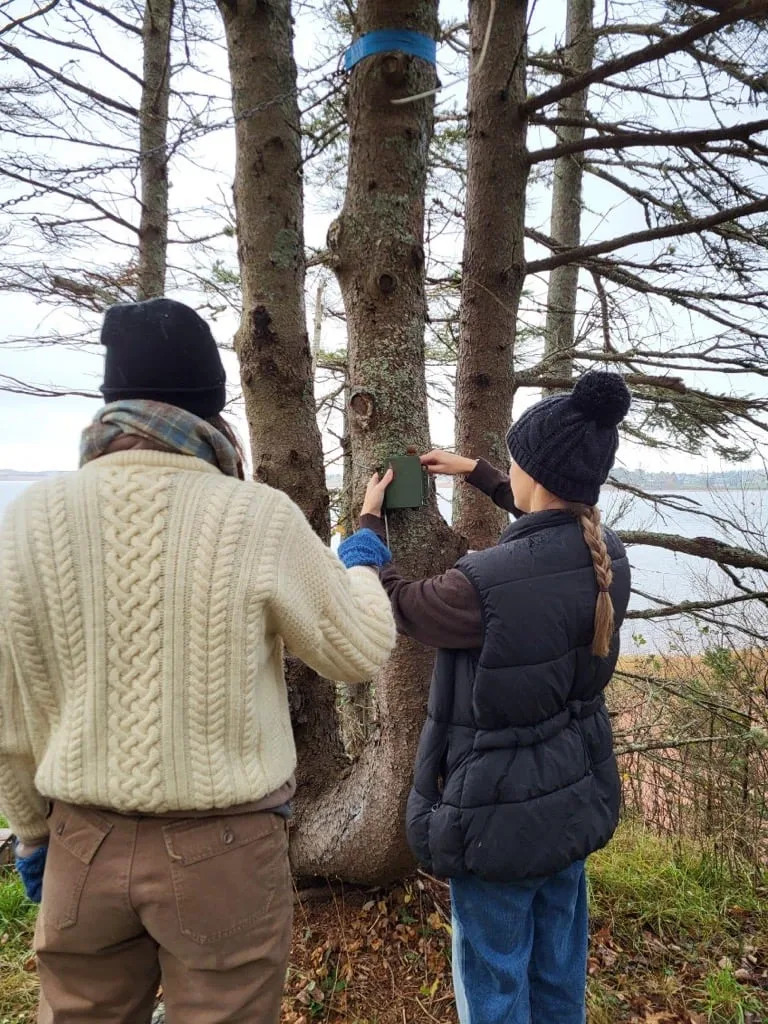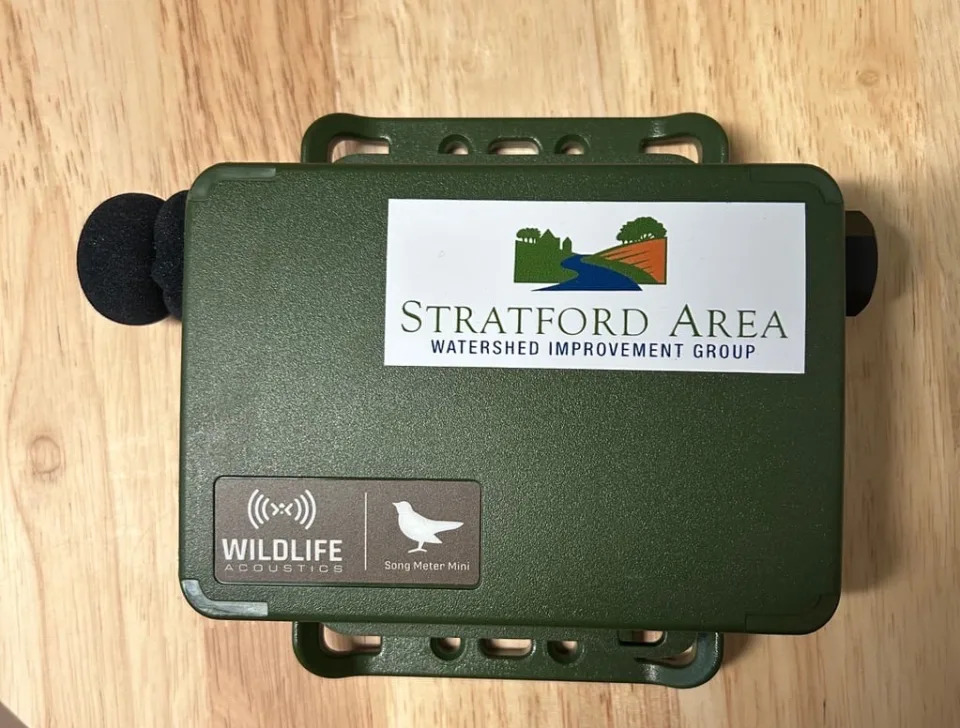CBC
Sat, December 30, 2023

Members of the Stratford Area Watershed Improvement Group fix a song meter to a tree. (Submitted by Stratford Area Watershed Improvement Group - image credit)
An environmental group in Stratford, P.E.I., has been listening in on birds, recording their sounds and using that data to learn more about them.
Throughout the fall, the Stratford Area Watershed Improvement Group set up acoustic recording units, or song meters, in habitats including a forest and the shore of a stream.
Recordings lasted an hour or two. With the help of software, the group was then able to analyze the bird calls they captured and track which species were where.
It's a great way to study the birds' behaviour without disturbing them, said Rebecca King, the watershed group's co-ordinator.
"We're going to continue to deploy them in future years," she said.
They mostly found crows, blue jays, and a few chickadees, robins and kinglets — "the main species that don't migrate, per se."

Acoustic recording units like this were placed in different habitats, including a forest and near a stream.
Acoustic recording units like this were placed in different habitats, including a forest and near a stream. (Submitted by Stratford Area Watershed Improvement Group)
But one bird, recorded several times at Fullerton's Creek in Stratford, stood out. The eastern wood pewee is an at-risk species with a call that is reflected in its name, said King. "It sounds like they're saying, 'Pewee.'"
The group hopes to capture evidence of more diverse species during the breeding season in the summer and spring, she said.
After a few years, the goal is to have gathered enough data to make "long-term inferences" about the health of natural ecosystems, King said. "The abundance of different bird species in a specific area is a really great way of indicating how healthy the ecosystem is."
The group got funding for the project from the Wildlife Conservation Fund.
It's one of several projects SAWIG is working on, including amphibian monitoring and public education on pollinators.
Eavesdropping in the trees
Discreet and easily camouflaged, the song meters are fastened to trees and other stable objects, ideally in the early morning during the summer, said King.
"Around sunrise is often when breeding birds are at their most busy," she said.
Researchers can use Bluetooth technology to link the meters to their cell phones. Once the recordings are in, the team uses software to analyze them and sift through the various bird calls. They also use their personal bird knowledge on occasion, King said.
"If you study them for long enough, you can learn the difference between what each bird sounds like."
The group has also been sending the data to open-source websites for other people to use, she said, including the Atlantic Canada Conservation Data Centre, which is compiling a mass database.
"It's been a very user-friendly way to easily learn about the environment."
No comments:
Post a Comment